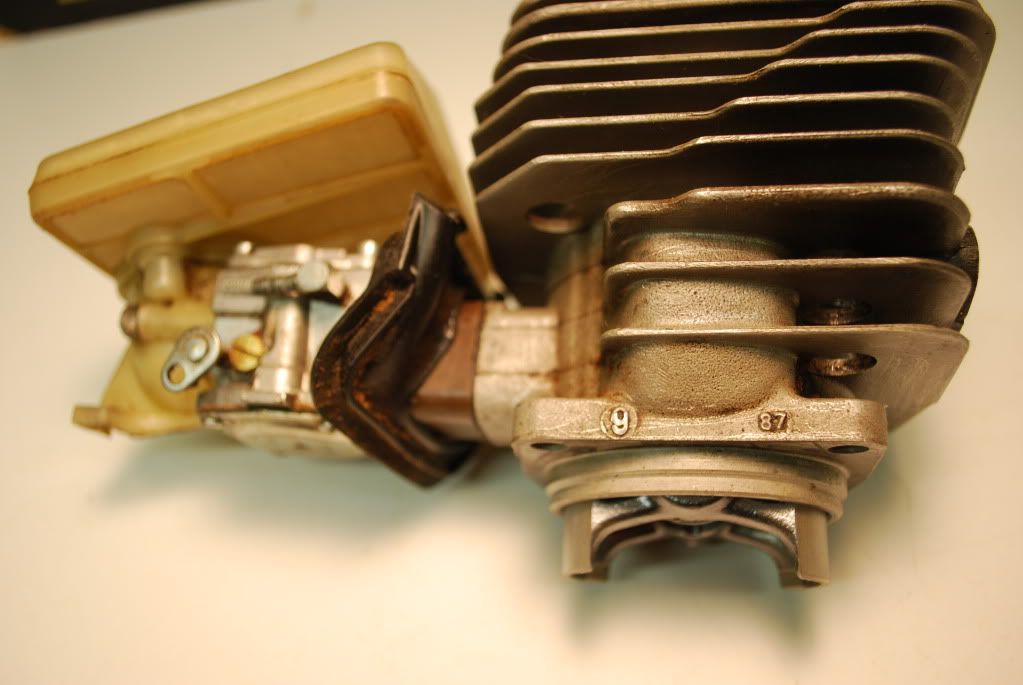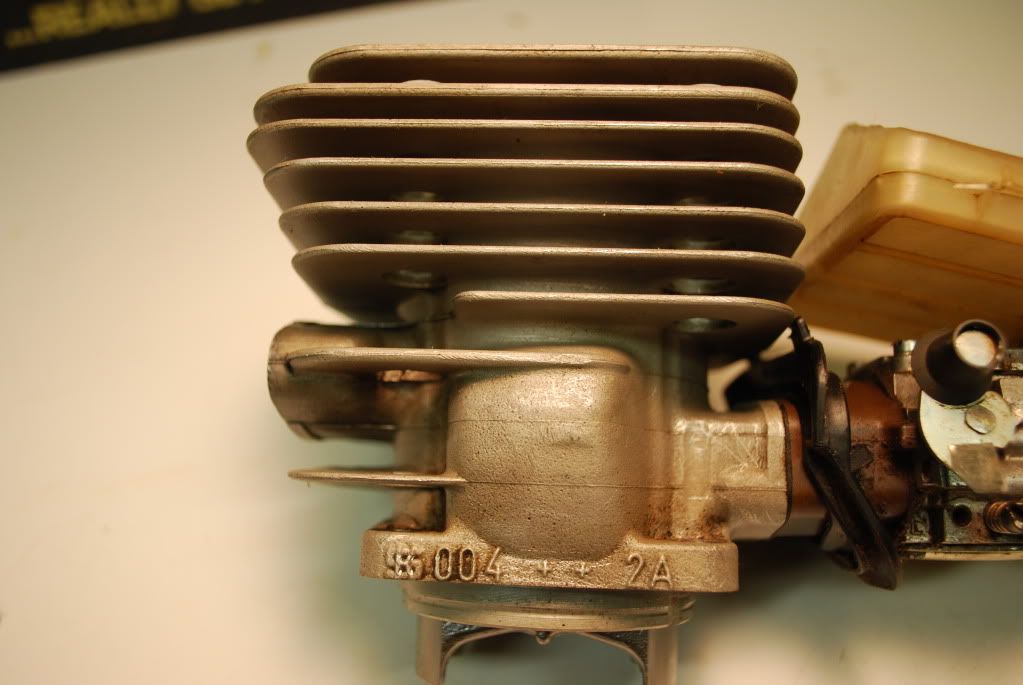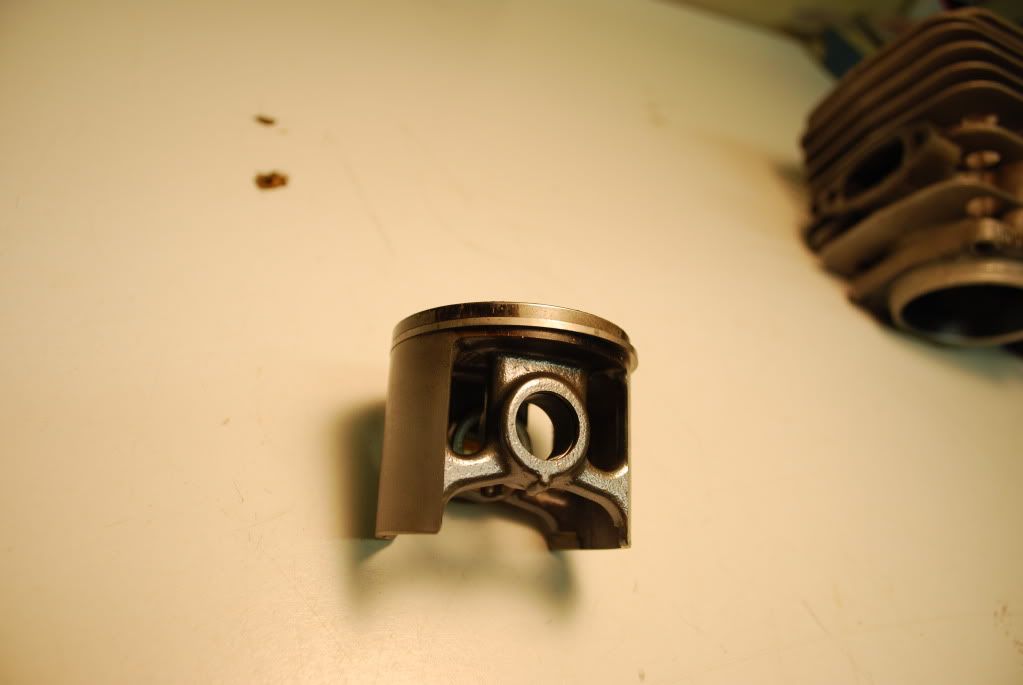BTW, for anybody still reading this old thread, in regard to the 2XX series and confusion.... The numbering format for Husky has always been that a 3 digit model is a pro saw, designed to work every day for 10 years. A 2 digit saw is a home user model designed to work every SEASON for ten years. The numbering format for a 2 digit saw is the apparent displacement. On a 3 digit saw, the first digit is the series, the second and third digits are the displacement, therefore, a 181 is the first series of an 80 CC engine displacement saw. The 288 would therefore be the second series and the new improved model had 88 CCs displacement and therefore a bit more horsepower. That 181 was the first high chain speed saw ever created buy anybody if I remember correctly, and was used here in the states by fallers, buckers and landing men to buck large diameter logs. We LOVED that saw because it was FAST. At that time, we used 2100s for falling big timber, which would have been the first series of a 100 CC displacement saw, which at that time was THE definitive monster saw. It was a beast. Being a "gypo" logger, (small time), I had to have one, while the real pros had several, and a couple 181s in their truck racks. I bought my 181 the first year it came out in the off season at a pawn shop for $300. I still have it. I ran the original engine, which had worn rings and the compression would not support the weight of the saw by the rope starter, WHEN I BOUGHT IT. I finally swapped that top end out in 2018 with an aftermarket Meteor 288 kit. This for the extra horsepower and the compression release. I kept the original 2 ring piston and cylinder because they have low wear! Shocking. If I find the rings somewhere, that top end is going back on the saw to keep it OEM, even though the Italian kit is quite good.
The 2100 had immense low end torque and was unstoppable. Great for burying it into a huge tree and really bogging it down while trying to muscle it through the pinch and get that wedge cut out and the back cut which the weight of the tree is trying to stall you. The 181 had to be kept up at high RPMs to really take advantage of the high horsepower and high chain speed characteristics. I currently have a 2100 that was given to me 2 years ago that has a full 120 lb of compression, and runs like new, and I have that 181 (now a "188") and a 288, and a third 288 sitting in the display case that is all NOS OEM parts still in boxes or sitting on the cases. I have a couple of new smaller huskies not worth mentioning here, but I think you get the point, I LOVE my 80s! ALL of my saws have 36" bars. Long enough to not have to bend down, but barely long enough to cut a 48" log without having to cut from both sides. Can be a bit much to handle but I'm used to it and they balance a big saw head out perfectly
Things to note on all later releases, most manufacturers must make improvements to sell new saws every year, both to keep up with competition, (Stihl here in the States, you are either a Stihl or a Husky Man here, never both). and to have something "new" to entice buyers to trade up. Keep the sales high. Therefore, later models should be improved, which in chain saws means more power in a smaller lighter package. The 272 is a beast of a replacement for the 288. Very similar actual cutting characteristics in terms of power and speed which counts in any professional tree work, in a package that is smaller , lighter, more streamlined, I mean the 272 was/is a SEXY lookin gsaw that has an extremely high chain speed, and is more of an all around saw. The 572 is perhaps touted as the most high tech saw ever built.... Arguably, depending on who you ask. I haven't demo'd one yet and probaly wont, since they are extremely expensive and I am not a pro anymore.
I cut large oak trees when they fall naturally on our 180 acres which is 179 more than one person can deal with! Here in the Sierras we have large trees, ponderosa pines on our land that are between 2 - 4 feet in diameter. Our black oaks the same. These saws really do feel great making short work of big logs. We men love power tools. Especially when you can get a deal on older saws like some posts here suggest. I bet $ that these 80 series saws can compete with any of the newer replacements with the really only difference being the extra pound or 2 of weight. Reliability is yet another discussion we haven't touched. The new high tech EFI saws are supposed to be better with fuel efficiency and emissions, and not needing to be tuned for elevation, an issue in any mountainous area, but are they reliable??? Only time will tell, and for guys like us, that decades of service with zero mechanical issues really speaks volumes when you look at the amount of $ made vs spent. The big pro fallers will argue that it doesn't matter because only collectors and gypos keep old saws, professional loggers here buy new saws every year, replacing about a 3rd of their inventory so that they always have to tools to put wood on the ground every day of the short season. Their reliability is based upon a volume of working saws, whereas mine is based upon a smaller inventory of consistently proven reliable saws. I keep parts. I KNOW these are going to work when I pull them out. And, as with any aftermarket, the parts availability is based upon how many of that model were actually sold and how much of a demand there is for parts to continue making them. Recently this proved true for the high top HD air cleaner cover. The OEM versions selling for hundreds of dollars, a guy here started making a really night tough version in mulitple colors for $80! Why??? Because we all still run them wither with teh HD paper air filter by K&N, which doesn't need to be cleaned all day, or the original modification version, the green motorcycle pod filter and a custom made air velocity stack to clamp it on with. THis was "farmer tech" back in the day when we hot rodded our saws to make them run better and in this case, keep us cutting all day instead of washing filters every time we refueled, which translates into more wood on teh grond and more $ in our pockets. So I bought 2 black ones and an orange one to protect my green weenie pod filter, which are cheap!















